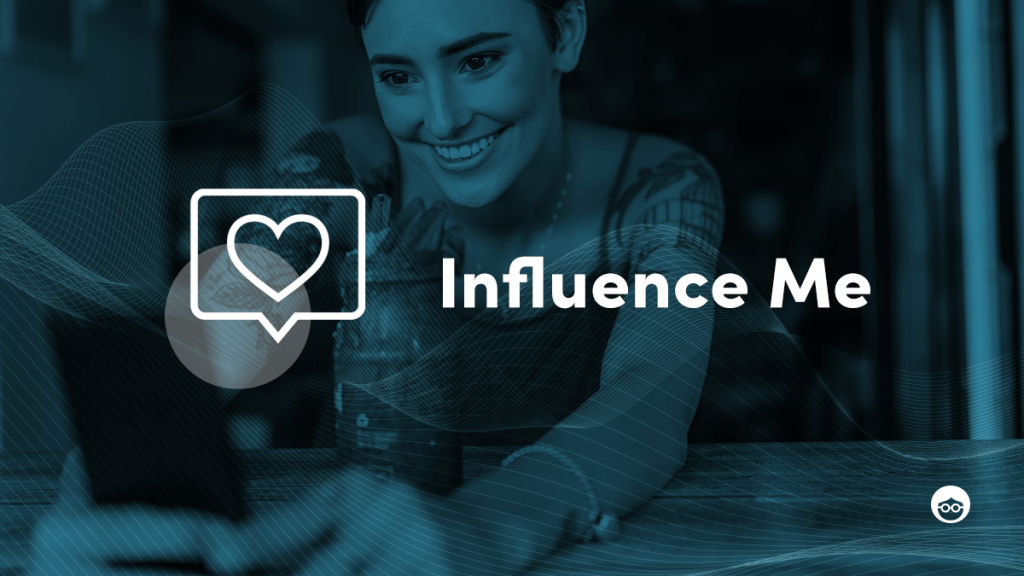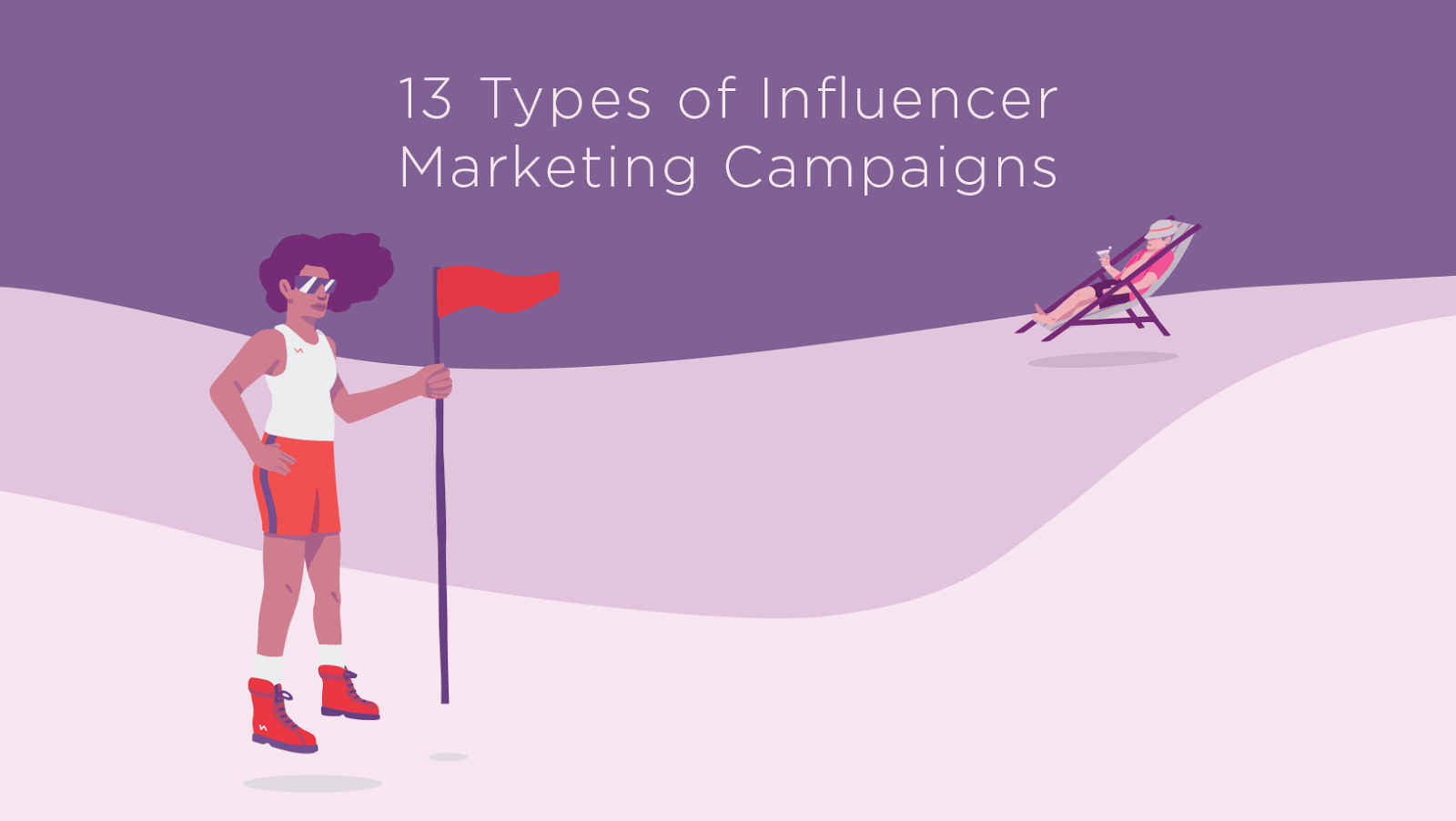7 Steps for Identifying the Right Influencers for Your Brand

In a world saturated with social media, influencer marketing is a popular marketing strategy and a powerful tool for amplifying your brand’s awareness and supercharging your sales. In a 2019 study conducted by Rakuten, 80% of consumers said they had made a purchase based on an influencer’s post, and 41% of consumers discover new products through influencer recommendations on a weekly basis.
Influencers can be used to highlight any aspect of your brand, from your product to your customer service. If you’re looking to find influencers for upcoming marketing campaigns, we’ve outlined the most important qualities and pitfalls to look out for when identifying influencers for your brand.
1. Identify the goals for your influencer marketing campaign
Before you start looking for influencers to work with, it’s important to identify what you’re looking to accomplish. Influencers can be tapped to help your brand achieve a number of different goals, such as:
- Brand awareness: Looking to get your brand name out there? If your goal is awareness, then working with an influencer who has a wider following might be worthwhile. Reach and impressions are going to be the best metrics to track.
- Sales: Influencer marketing, if done well, can generate significant conversions. Engagement rate is the more important metric to pay attention to if you’re looking to generate conversions.
- Follower growth: If you want to grow your social media accounts, an influencer can help you out. For example, you could host a giveaway with an Instagram influencer and make following your accounts part of the requirements to enter.
2. Understand your target audience
Knowing your target audience is a key part of any marketing campaign, and influencer marketing is no different.
In order to find the right influencers to work with, you should have a solid understanding of your target audience’s persona and demographics, like what regions they live in, how old they are, their job titles, what they are interested in and passionate about, how often they use social media, which social networks they use most often, and more.
This will make it easier to find the influencers who speak to the customers you’re looking to target.
3. Decide what type of influencer you’d like to work with
There are several different tiers of influencers based on follower count. While these tiers are very loosely categorized, the main categories of influencers you can collaborate with, according to Iconosquare, are as follows:
- Mega influencers: 1 million+ followers
- Macro influencers: 100,000 – 1 million followers
- Micro-influencers: 10,000 – 100,000 followers
- Nano influencers: 10,000 followers or less
It’s worth noting that the more followers an influencer has, the more expensive it will be to work with them. Also, just because an influencer has millions of followers, doesn’t mean this will lead to more conversions or awareness for your brand.
For example, Prince Rich of Rich Technology Group is a Voice over IP and business phone system nano influencer. However, he works with all the major VoIP providers in the US and leads a successful consulting business.
Why is he so successful although he’s far from a mega-influencer in terms of followers? Because he owns his niche, releases weekly content that is hyper-targeted to his audience, and is a respected expert in his industry. This also reinforces the importance of knowing your audience and understanding your niche when it comes to working with influencers and affiliates, rather than just looking at follower metrics.
4. Search for influencers
After narrowing down your campaign goals, target audience, and the type of influencer you’d like to work with, it’s time to begin your search. If you don’t know where to start, here are a variety of different avenues to explore to find the right talent:
- Search hashtags related to your industry or niche: Most social media platforms will let you search by hashtag. Use this to your advantage. Comb through hashtags that relate to your product, service, or brand to find influencers in your niche or who are interested in those topics.
- Look through tagged posts or mentions: If people are talking about your brand on social media, it’s worth looking into further. You may discover that social media influencers are already promoting your brand organically.
- Start with one influencer, then search for related accounts: Have a name to start with? Look for related accounts to find similar influencers. On Instagram, this can be achieved by visiting a profile and clicking on the down arrow “V” icon next to “Email.” On YouTube, see if any similar influencers appear in the “Related” tab.
- See which influencers your competitors are working with: Look through your competitors’ accounts to see if they have partnered with any influencers. Keep in mind, however, if you decide to send a pitch, they may be barred from working with you due to an exclusivity clause in your competitor’s agreement.
- Use an influencer marketing platform: If outsourcing is more your speed, there are dozens of platforms and companies that do the work of scouting and vetting influencers for you. You can also use a social CRM tool with social listening capabilities. This will allow you to automatically track hashtags, comments, posts, mentions – virtually all social activity – and will make locating influencers easier if you have the budget.
5. Know your influencer selection criteria
An influencer’s follower count is only one small piece of the puzzle. You’ll need to figure out what other characteristics are important to look for in order to give your marketing campaign the best chance at success. You can look at things like:
- Engagement rate: This is arguably more important than follower count. Engagement rate indicates how well an influencer’s content resonates with their followers. Experts generally agree that an average engagement rate is 1-3%. Anything above 3% is high, and anything below 1% is abysmal.
- Post frequency: How often do they post to their social media pages? Do you want to work with someone who posts nearly every day or less often?
- Personality/tone of voice: Every influencer has their own personality and tone of voice. Do you want someone upbeat or more serious? Look closely at their captions or videos to get a sense of whether their tone aligns with yours.
- Authenticity: Unfortunately, some influencers buy their followers or gain them through unethical tactics. A low engagement rate (< 1%) usually means they bought followers. You can also use free tools to make sure their account growth is organic.
6. Negotiate compensation and deliverables
When you reach out to influencers, it’s likely that you’ll have to do a bit of negotiation to satisfy both parties. There are a few different types of compensation you can try to go after, depending on your goals and marketing budget:
Gifted product
You give your product or service for free to an influencer in exchange for content. This could be any type of content: a Story, in-feed post, or video mention, for example. In the influencer industry, it’s more ethical for gifted product campaigns to be obligation-free, meaning the influencer is not obligated to post since they did not receive any monetary compensation. Also, keep in mind that larger influencers are very unlikely to make dedicated content around gifted products without being compensated.
Affiliate marketing
This is when a brand offers a special discount code for an influencer’s followers in order to entice them to make a purchase. The influencer may receive a small monetary kickback depending on how many times their code is used at checkout. This is commonly coupled with a gifted product, meaning you will also give your product to the influencer in addition to giving them a unique discount code to promote to their audience.
You can read more about affiliate marketing and whether it’s worth it for you in this guide.
Monetary compensation
This means you will pay an influencer an agreed-upon amount to promote your brand to their audience. Remember that content creators do so much more than just post a photo to Instagram. Each piece of content they create requires some level of art direction, styling, photography or videography, post-production editing, copywriting, and marketing strategy.
In addition to agreeing on compensation, you’ll also need to hammer out the deliverables and other legal terms of the agreement. What type of content will the influencer produce for you? Is this campaign going to consist of a single post? Multiple posts? Posts on one platform? Across social platforms? Are you going to work with them once or is your campaign ongoing? Do you want to give them some key points to include in the content or let them say whatever they’d like?
It’s best to know the answers to all of these questions before reaching out, but keep in mind you may need to be flexible depending on whether the influencer tries to counter your initial pitch.
7. Track your metrics
Once your campaign has launched, you’ll need to track metrics in order to gauge if it was a success. To manage these metrics and data in one place, online collaboration tools will help to keep your entire team on the same page. The most common metrics you focus on may vary depending on your goals, but here is a list of what to look out for:
- Engagement rate: Engagement rate refers to the percentage of people who interact with content compared to the number of followers on the social media account. The higher the rate, the better.
- Reach: Reach measures the total amount of unique social media users that saw the sponsored content in their feed. The higher the reach, the more people saw your campaign.
- Impressions: Impressions are the total number of times your sponsored content was displayed on screen. High impressions mean your campaign reached a wide audience.
- Views: This metric only applies if video or Stories were made part of your deliverables. A high number of views suggests that the content the influencer created was engaging, on-brand, and enjoyable to watch.
- Positive sentiment: Pay close attention to the comments that influencers receive on their sponsored content with your brand. Do their followers seem to resonate with your brand in a positive way, or are they indifferent?
- Link clicks: Check if your influencer campaign brought more traffic to your site. If you asked for a link to be included in Stories, their profile bio, or video description box, it’s a good idea to append UTM tracking parameters to definitively isolate the traffic that came from influencers from your normal web traffic.
- Conversions: This is an absolute must-track if the goal of your campaign was to bring in sales. In addition to how many website visits came from your campaign, look at how many of those visits turned into sales.
- Affiliate code usage: If you provided an affiliate code to promote in influencer posts, track how many times it was entered at checkout or mentioned to a sales representative. Determine if this number met, exceeded, or was shy of expectations.
- Follower growth: Did your social media accounts experience an uptick in followers after the influencer posts went live? Compare your follower counts before and after the campaign to determine whether or not they had an impact on your follower growth.
The seven steps above are a clear roadmap covering the A-Z of identifying the best influencers for your brand, crafting influencer agreements, and running and tracking influencer campaigns. Once you have developed solid relationships with the right influencers, you will truly begin reaping the immense rewards of influencer marketing for your brand – and there’ll be no looking back.










